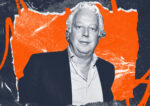Trending
Space invaders: Developers team up to tackle LA’s parking laws

André Bueno has only been back in the Los Angeles area for a few weeks, but one of the biggest headaches residential builders here face is already clear to him: How does a developer meet the city’s rigid parking requirements and still make money?
An Altadena native who did a stint at Goldman Sachs before getting into development, Bueno recently returned to Southern California and is eyeing three Koreatown sites for potential mixed-use projects. Earlier this month, he had a four-and-a-half-hour meeting with his architect on the parking issue where they looked at robotics, vending machine parking, and other solutions to meet a code that can require up to two spaces per two-bedroom apartment.
“We’re not going to build 30 apartments and then have four stories of parking,” Bueno said. “It doesn’t make sense. … We want to build as many units as we can to max it out.”

André Bueno (via twitter)
On May 9, Bueno was one of about 50 real estate professionals at a conference searching for answers on how to tackle that challenge. The conference, hosted by the Council of Infill Builders, focused on a new report issued by the group — titled “Wasted Space: Options to Reform Parking Policy in Los Angeles” — that looks to drive the conversation on parking-policy reform.
Though exceptions exist — such as for developments that include rent-restricted affordable housing or are located in Downtown or near transit stops — residential projects generally must adhere to the city’s requirements, governed by a 70-year-old zoning code: A single-family home must have two dedicated parking spaces. In multifamily buildings, two-bedroom units require two spots, while one-bedroom units require 1.5 spaces and studios require one spot.
These policies, coupled with the region’s addiction to cars, have created what many consider a parking glut: Between street parking and residential and commercial developments, L.A. County has 3.3 spaces for every automobile, according to a 2015 study by the American Planning Association.
Providing this parking can cost developers millions. For example, Trammell Crow Co.’s La Plaza Cultura Village, a $140 million mixed-use development, will require 720 spaces total at a cost of $28 million for its 365 residential units and commercial space. Bobby Turner, principal of Turner Impact Capital, said last year that parking can cost as much as $20,000 per unit.

A Lyft driver in Downtown Los Angeles (Photo by Luis Sinco/Los Angeles Times via Getty Images)
Builders question whether the investment makes sense in the age of Uber and Lyft, the city’s investment in mass transit and an aging baby boomer cohort that will begin coming off the road over the next decade.
The Department of Transportation estimates that up to 40 percent of the congestion in Downtown is directly attributable to people looking for a place put their vehicles, according to Seleta Reynolds, the department’s general manager. Residents have repeatedly stressed to her office that they want space to be used for more than just parking.
“When we provide too much parking for a place,” she said, “it stops being a place.”
“Wasted Space” calls for three key changes: (1) eliminating, reducing, or “right-sizing” parking requirements while letting the market determine supply; (2) demand-based pricing; (3) improved parking management, including shared-parking arrangements.
But although these proposals have broad support within the development community and among planners and environmental advocates looking to reduce congestion and pollution, barriers remain. Ethan Elkind, a professor at UC Berkeley who assisted the Council of Infill Builders with the report, said in a presentation at the conference that a lack of parking data is a key issue, and community groups and housing advocates are both skeptical of parking reform.
In the case of the former, “people are upset or afraid when you talk about new projects coming in,” Elkind said. For housing advocates, offering developers reduced parking as a trade-off for an affordable component — a condition of the city’s density-bonus laws — is an important tool.
“High-parking requirements are too often used as leverage to extract benefits from developers,” Elkind said.

Ann Sewill
But Ann Sewill, the vice president of housing and economic opportunity at the California Community Foundation who has worked at the California Department of Housing and Community Development, said parking is more than just a negotiation tool — it’s an issue of equity. She cautioned against looking at the issue through an “income-neutral” lens, saying that many lower-income residents are car-dependent and that undocumented Angelenos don’t have Uber accounts.
“Those people are probably going to own at least one car and want to put it somewhere,” Sewill said, adding that eliminating parking minimums could lead to unintended gentrification and displacement.
Mott Smith, principal of Civic Enterprise Associates LLC, called the parking issue “the no. 1 lowest-hanging-fruit way that we can make housing more affordable,” but said little will change unless developers can properly frame the issue to skeptical residents who see cars as central to their way of life.
He also worries that the industry may be “chasing the ghost of the single-family homeowner” that’s slow to embrace planning and zoning changes.
“Measure S is evidence that the ghost has a lot less to say than we think it does,” Smith said, referring to the unsuccessful March ballot initiative that would’ve barred new developments that required general-plan amendments and zoning exceptions in effort to rein in so-called “megadevelopments.”
But Hilary Norton, the executive director of the nonprofit Fixing Angelenos Stuck in Traffic, offered a simpler solution: emulate innovative parking policies that have already worked.
For example, her neighborhood, Eagle Rock, was able to reduce certain parking requirements as part of an effort to produce a walkable, mixed-use neighborhood. The result, according to Norton: A bustling commercial corridor that’s blossomed along Colorado Boulevard, and a community that embraces pedestrians and cyclists. That spirit is spreading, she said, pointing to a boom in development along the neighborhood’s other major road, Eagle Rock Boulevard.
“It was started,” she said, “because [residents] decided storing cars isn’t the most important thing we can be doing in this community.”




